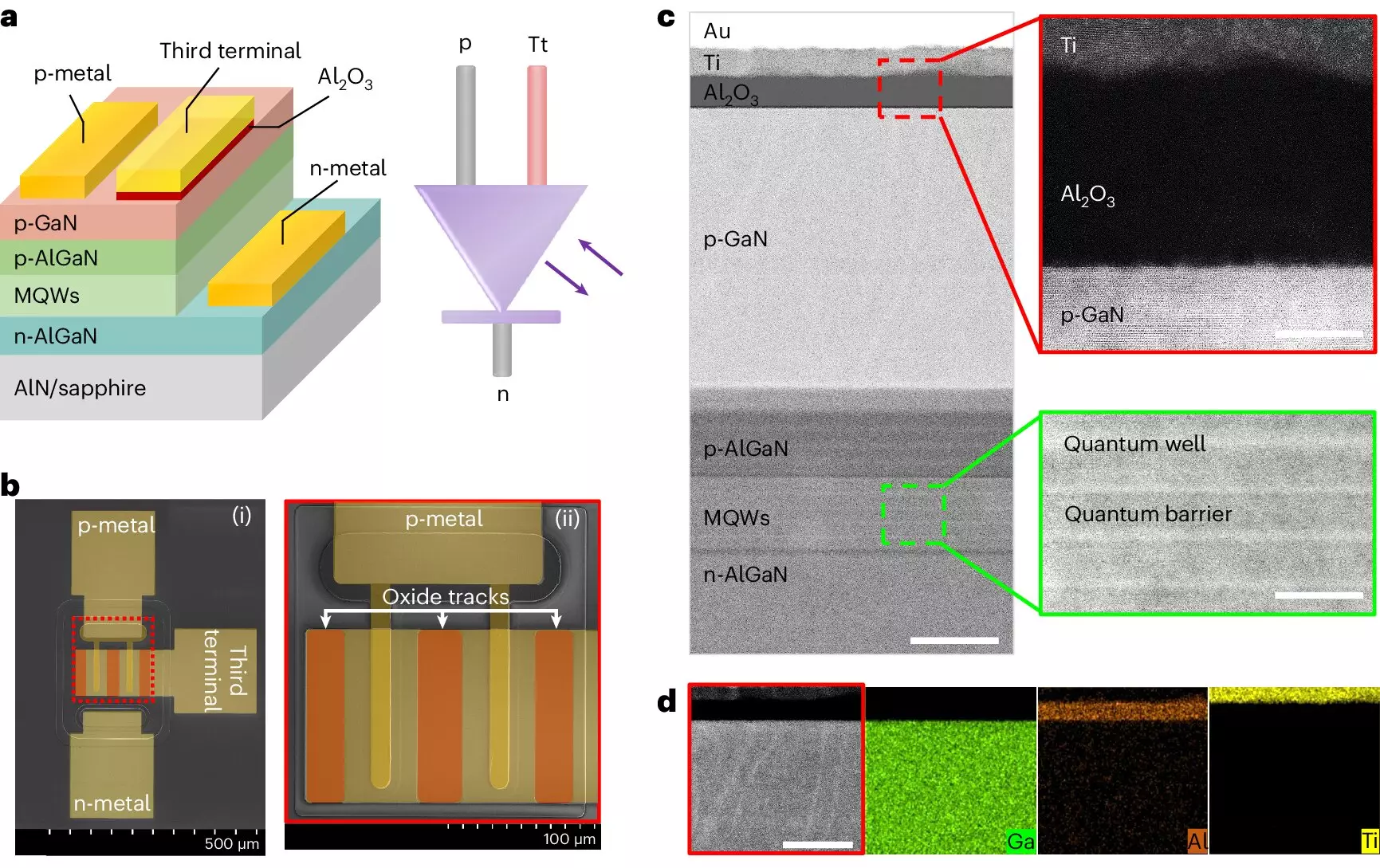The University of Science and Technology of China (USTC) recently made a breakthrough in the field of optoelectronic devices by developing a new three-terminal diode that can both emit and detect light. This innovative diode, presented in a paper published in Nature Electronics, opens up new possibilities for highly performing wireless communication and light-driven computing systems. This advancement comes as a response to the limitations of traditional two-terminal devices and aims to enhance the functionality and performance of optoelectronic devices.
The three-terminal diode designed by Prof. Haiding Sun and his team at USTC combines a traditional gallium nitride-based p-n diode with a newly introduced third terminal. This third terminal consists of a metal/Al2O3 dielectric layer directly applied to the p-GaN layer. By incorporating this third terminal, the diode is able to operate as both a light emitter and a photodetector, significantly increasing its capabilities in optical wireless communication (OWC) and paving the way for optoelectronic logic gates (OELGs).
Improving Modulation Bandwidth
One of the key advantages of the new three-terminal diode is its ability to enhance modulation bandwidth by adjusting the bias applied to the third terminal. This feature allows the device to modulate light intensity effectively, resulting in a significant improvement in performance compared to traditional two-terminal devices. Additionally, the diode can establish reconfigurable NAND and NOR optoelectronic logic gates by utilizing both voltage and incident light as inputs, showcasing its versatility and potential for advanced computing technologies.
The development of this new light-emitting and detecting diode brings several advantages for optical wireless communication (OWC) systems. In initial tests, the three-terminal diode was found to enhance modulation bandwidth by more than 64%, a substantial improvement over current systems utilizing classic light-emitting p-n diodes. The diode’s ability to switch seamlessly between emitter and detector modes provides a versatile and dual-functional device architecture, contributing to faster, more efficient, and reliable data transmission methods.
The research team behind the development of the three-terminal diode is optimistic about its potential applications in the future. The diode could be used to fabricate OWC technology capable of transmitting data at higher speeds and could also be integrated into innovative optically driven computing systems. As Prof. Haiding Sun and his colleagues continue to refine the performance of the diode and explore integration with other optoelectronic materials and systems, the possibilities for the advancement of multifunctional and integrated electronic and optoelectronic systems are endless.


Leave a Reply